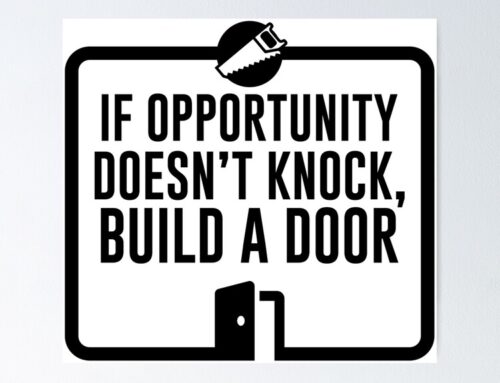How To Structure Your Marketing Team To Create The Best Content

When it comes to your content, you want people who are passionate about it working on it—every step of the way. Building the ideal content marketing team structure means finding the right person for each step of the process.
So how can you get the best content from your marketing team by identifying what they want to do most?
Define Roles For Every Person Who Participates In Content Marketing
Each person in your content marketing team structure should have a role. Let’s be clear: Roles aren’t titles. People on your existing team can—and should—serve in these roles.
For smaller businesses, there may be one person with multiple roles, but when those content marketing roles are defined, the process will be smoother. Here are the primary roles in the content marketing team structure.
1. Content marketing strategists
Content marketing strategists set the stage for the entire content marketing operation.
Your strategists help the entire content marketing team understand your audience (most likely in the form of personas), the topics you’ll cover (based on your content core) and how you’ll measure success.
2. Content strategists
If content marketing strategists lay out a game plan, the content strategists are responsible for directing the team to execute the plan.
Content strategists focus on the audience and topics, and determine the best content, channels and overall ways to connect your content marketing with your customers.

3. Idea contributors
Do you know people who have a million ideas in their head, but may not have the time to create content or the desire to do so?
These folks have lots of great ideas when it comes to the topics that people might enjoy reading about. These are your ideal idea contributors.
The best part about idea contributors is that they don’t have to be limited to people inside your content marketing team structure. Idea contributors are everyone from your customer support techs to your CEO.
Unless they express interest in creating content, you shouldn’t pressure them to do so. Instead, just invite them to share their ideas for others to develop.
Make it easy for idea contributors by giving them access to a shared Google spreadsheet or letting them email a specific member in the content marketing team structure. Let them contribute as little information (such as a topic idea or content title) or as much information (topic idea plus outline or main points) as they want.
The simpler you make the process, the more ideas you can get for the content creators on your team.
4. Content writers
Content writers are the people who use their creativity and knowledge to develop various types of content.
With the support of idea contributors, content creators never have to fear the dreaded “writer’s block” syndrome. And with the support of content editors, they don’t have to focus on the technical aspects of writing—they can just let their ideas flow.
5. Content editors
Content editors are the people in your content marketing team structure who use their technical writing skills to refine content created by your content creators.
They are the people who may not have a steady stream of topic ideas or a willingness to write tons of content. But they can ensure that each piece of content flows well and is free of spelling and grammatical errors.
They also manage the editorial calendar to ensure that content is published on a regular basis.
6. Content promoters
Content promoters spread your content far and wide after it goes live.
Anyone in your company with a social media account can do the simple promotion of sharing your content with their network. In addition to simple content promoters, you should have someone who handles the full promotion of each piece of content.
Full promotion includes sharing content on the company’s social networks, sending the content out to newsletter subscribers, reaching out to other blogs that might be interested in linking to the content, and so on.
7. Graphic Designers
Strong visual communicators are invaluable for content marketing. Sure, you can create graphics using a variety of free tools. However, they are not a replacement for a skilled graphic designer.
Content teams tend to have heavy visual design needs. That means designers carry a heavy load. Some of the assets they create include:
- Website images
- Blog post graphics
- Social media graphics (post images, cover photos, etc.)
- E-book covers
- Presentation slide graphics
- Infographics
- Print collateral (brochures, flyers, etc.)
That’s just a short list of examples. A great designer will ensure your content maintains a consistent brand identity across all your content.
8. Community managers
Community managers help manage the engagement around your content, including comments and social media posts.
They will respond to comments, moderate spam and thank those who share your content. Having a dedicated community manager for your blog will help you grow a loyal community of readers and people who love to share your content.
9. Content analysts
There should be someone who takes the time to review the analytics for your content.
This person will look at traffic, social shares, engagement, search rankings and conversions to determine which pieces of content perform best for your business. They will use this data to suggest the best topics, optimal times to publish and strongest content creators.
10. Videographers / Video editors
You’ve probably heard the hype around video content marketing.
Believe it. The value and growth of video marketing is only set to increase. These folks will shoot and edit video for social media, blog posts, your website, YouTube (and other video hosting and sharing sites), and more. Shooting live video for social media is also an important skill.
Content Creators Are Linchpins In Your Content Marketing Team Structure
While every role is essential for a successful content marketing team structure, content creators take on a bulk of the workload.
There are tons of different types of content creators that you should have in your content marketing team structure. Here are a few ways to make sure each content creator is doing what they love.
Who’s the best at creating certain content formats?
Not all content creators are writers, nor should they be. You will want to enlist the help of content creators who can handle different types of content including text, graphics (blog graphics and infographics), audio (podcasts) and video (screencasts and on-camera).
When you have content creators to cover all of the content formats your content strategist recommends you use, you can create robust pieces of content that include different formats to appeal to different learners.
For example, you could have a tutorial post that includes great screenshots and video screencasts. You could have videos with optional MP3 downloads. Think of ways to mix and match your content, and you’ll appeal to those who prefer to read, listen and watch.
Focus on your marketing team’s strengths.
Not all content creators are created equal. Some may have particular strengths, all of which are important to your content development.
Here are a few strengths to look for within your content creators:
Researching
Some people love data.
They love digging into analytics to identify specific trends that lead to specific results. They love hunting for convincing statistics.
They love conducting experiments. They love keeping tabs on your competitors to see what content topics perform best for them.
These people are the researchers on your team.
They can help you create in-depth content, such as reports, white papers and e-books. They can also boost the value of the content created by other team members by backing up advice with the data needed to convince readers to take action.
Storytelling
Storytelling is not a gift that every content creator has tucked away under their belt. But it’s an important aspect that can help people relate to your content, even in a boring industry.
Educating
Those that love to teach will enjoy creating the educational content. Educational content includes how-to posts, guides and e-books.
Interviewing
Interviews make for great content because you can bring in viewpoints from outside your company.
In addition, you can generally rely on the interviewee to promote your content, exposing it to a new audience. Having someone with interviewing skills in your content marketing team structure is a definite plus!
Assign content creation based on your marketing team’s interests.
While most people can write about several different topics, many have topics they are passionate about.
Those who write about the topics they love and know like the back of their hand are going to create superb content that your audience is going to love.
If you can find someone on your content creation team to cover each of the main topic areas for your blog and other content types, they will automatically become your company’s “expert” on that topic.
Who on your marketing team knows your audience the best?
Do you have multiple personas defined for your content marketing strategy?
For example, maybe you have a great tool for businesses and thus write content geared towards CEOs, project managers and potential product users. If so, then you might want to know which of these audiences your content creators want to write for.
Article By : Kristi Hines Co Schedule

206-391-5682
i2i@i2idirectmarketing.com
www.i2idirectmarketing.com
“…all deliveries GPS tracked…”




